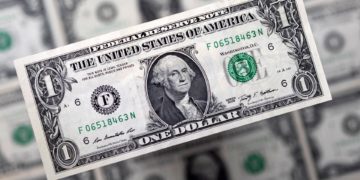On Friday, the oil markets lost territory after the markets received negative data about the state of the United States Labor Market, and after the US dollar posted gains. On the other hand, on Sunday the markets posted gains in light of the crude oil disruptions caused by the arrival of tropical storm Laura and Hurricane Marco to the Gulf of Mexico.
According to data released by the Labor Department last week, the number of applications for unemployment benefits went up from 971,000 to 1.11 million. The Greenback advanced 0.49 percent against a bundle of its main competitors, closing the session at the 93.25 level, further debilitating the oil markets.
All this came after the OPEC+ members discussed the compliance of its members with production limits imposed by the organization to counter the sharp drop in oil demand in the last few months.
The West Texas Intermediate crude oil futures went down by 0.56 percent during the Friday session, closing at the 42.34 level. In the same way, Brent oil futures dropped by 1.22 percent, closing the session at the 44.35 level.

The Bureau of Safety and Environmental Enforcement reported that energy firms diminished their crude oil output in the Gulf of Mexico by 57.6 percent given the forecast of tropical storm Laura and Hurricane Marco hitting the Gulf coast. Natural gas production was also diminished by 44.6 percent.
Due to this supply disruption, on Sunday the West Texas Intermediate crude oil futures gained 0.24 percent, closing the session at the 42.44 level. In the same way, the Brent oil futures advanced 1.53 percent during the session, closing at the 45.03 level.
“Crude prices rose higher as double trouble in the Atlantic could lead to huge disruptions with oil operations in the Gulf of Mexico,” explained an analyst at OANDA, “Oil’s gains, however, are likely to be muted as virus uncertainty continues to weigh on the crude demand outlook,” he added.
The Covid-19 pandemic continues advancing around the world, infecting 23,586,631 individuals and killing 812,537. The United States leads in the number of infections, with 5,874,146 total cases as well as 180,604 total deaths, followed by Brazil, India, and Russia.
The U.S. Food & Drug Administration announced an “emergency use authorization” of blood plasma from recovered patients as a treatment against COVID-19. This technique, which employs antibody-rich blood plasma, is apparently useful if it’s administered within the first three days of hospitalization, though further research is needed to determine its effectiveness.
“It appeared that the product is safe and we’re comfortable with that and we continue to see no concerning safety signals,” explained the director of the FDA’s Center for Biologics Evaluation and Research.
The negotiations regarding coronavirus aid legislation continue being stalled. The Democrat-led house of Representatives recently approved a bill during a special session with the purpose of avoiding the deterioration of the US Postal Service funding. The Republican-controlled senate will probably reject this legislation when it reaches this instance.
The US stock markets closed in the positive territory on Friday. The S&P 500 gained 0.34 percent during the session, closing at the 3,397.16 level. In the same way, the Dow Jones Industrial Average advanced 0.69 percent, closing the session at the 27,930.33 level, while the Nasdaq 100 went up by 0.68 percent during the session, closing at the 11,555.16 level.
In the same way, the European stock markets posted gains during the session. The DAX gained 0.16 percent, closing the session at the 12,785.80 level, followed by the FTSE 100 which went up by 0.17 percent during the session, closing at the 6,012.38 level, while the Euro Stoxx 50 advanced 0.79 percent, closing the session at the 3,269.33 level.











































